Summary
The following is an exhibition of objects of art from cultures from five select regions in the world: Oceania, Africa, Japan, China, and India. These objects are representative of the cultures and highlight significant and essential ideas of each culture, giving a glimpse into their ways of life, cultural activities, and much more. This exhibition features pictures of objects created between 1300 and the present day.
Oceanian art
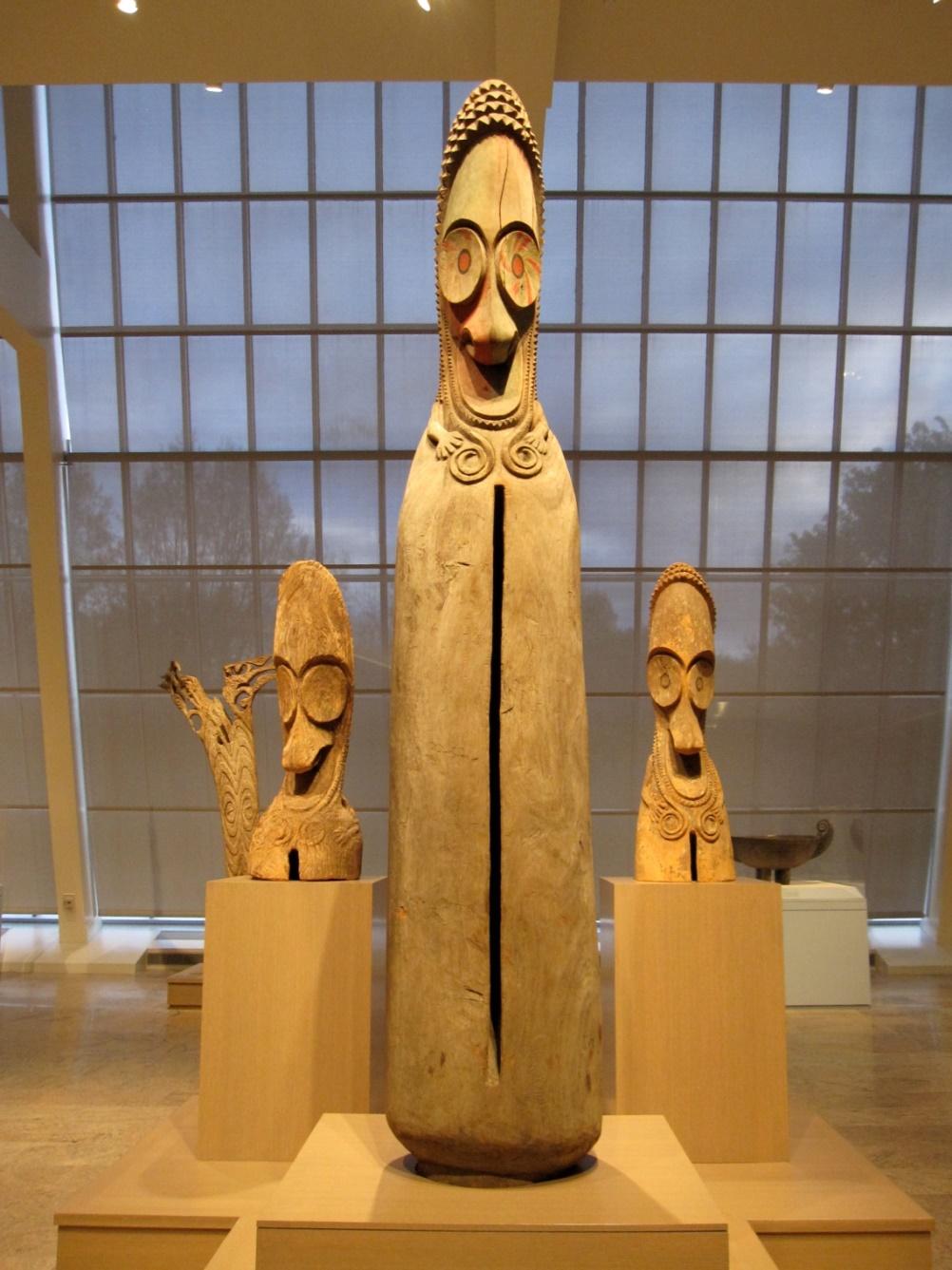
- Title: Slit Gong (Atingting kon)
- Artist: Tin Mweleun (Commissioned by Tain Mal)
- Date: mid-to-late 1960s
- Culture: Ambrym
- Medium: Wood, paint
- Location: Vanuatu, Ambrym Island
This object is one of the largest musical instruments in the world. Slit Gongs are made from locally available breadfruit tree trunks (The Met Museum, n.d.-c). These trees are also vital food sources. These objects are usually found in collections in important cultural sites like dancing grounds and feature in important ceremonies like dances, funerals, and initiations. This object was chosen because music is an integral part of any culture. Therefore, musical instruments have a lot to tell about the culture they are found in.
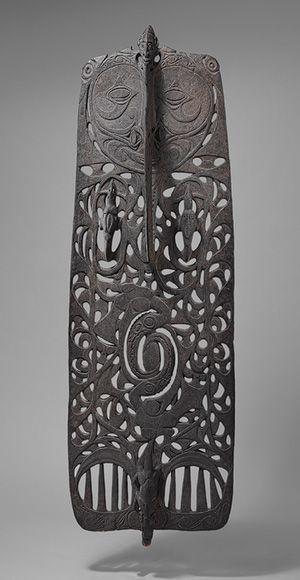
- Title: Ceremonial Board (Malu)
- Date: 19th Century
- Culture: Sawos people
- Medium: Wood
- Location: Papua New Guinea, Middle Sepik River
Malu boards are a rich representative of the Sawos People’s culture but while the Sawos created them for their use, these boards were also exported to the Latmul people who used them in initiation ceremonies (The Met Museum, n.d.-a). These boards were displayed to village women when a boy died during the transition to manhood. Malu boards represent the curvilinear style of carving that shows the advancement in the carving of the people in the Middle Sepik River region. In addition, they represent advances in the trade and relationship Malu people had with their neighbors. This object was chosen because it paints a clear picture of the Sawos way of life, including trade, ceremony, relationship with nature, and technological advancement.
African art
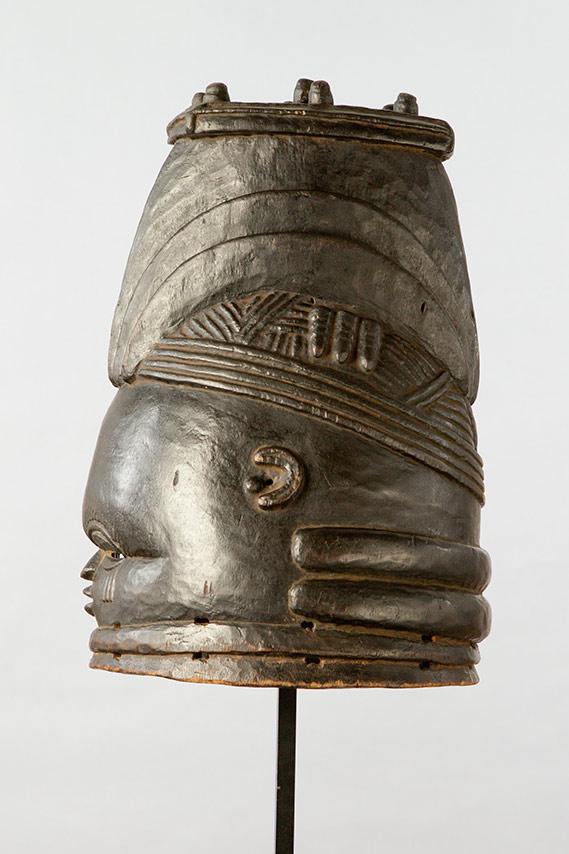
- Title: Mende Sowei Mask
- Date: 19th Century
- Culture: Mende people
- Medium: Wood, pigment
- Location: Southern and Eastern provinces, Sierra Leone
This object was used in female initiation ceremonies. Mende girls would be taken for an initiation ceremony in the forest where they would be taught the secret of women and this mask would be worn both during the ceremony and during their presentation to the village as mature women ready for marriage (Snyder, 2018). This mask was worn by the lower, or spiritual leaders who could only be women. This artifact was chosen because it depicts a reverence for the female spirit in traditional African cultures that is not as understood today.
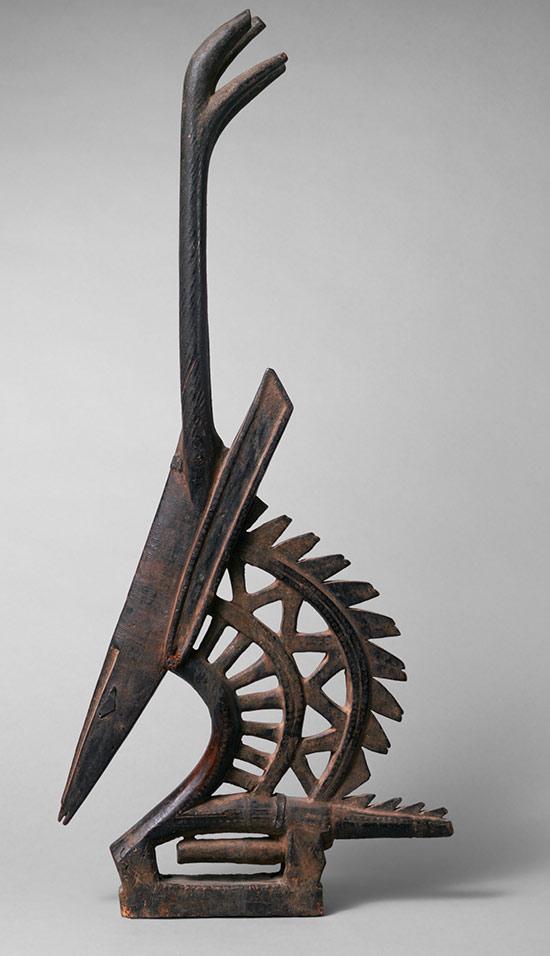
- Title: Headdress: Male Antelope (Ci Wara)
- Date: 19th – early 20th century
- Culture: Bamana Peoples
- Medium: Wood, metal bands, thread
- Location: Mali, Bamako region
This headdress was created to honor one of the Bamana people’s gods called Ci Wara, who was credited for introducing agriculture to them. The people believe that the headdress was created to give Ci Wara an abode he could reside (The Met Museum, n.d.-b). This artifact was carved in the shape of an animal whose features were a combination of the antelope, earth-digging aardvark, and the armored pangolin, all animals significant to the agricultural people. Dancers wore these artifacts to praise farmers for their efforts and there was a headdress for each sex. This artifact was chosen because it depicts the spirituality and reverence for gods African cultures had.
Japanese art
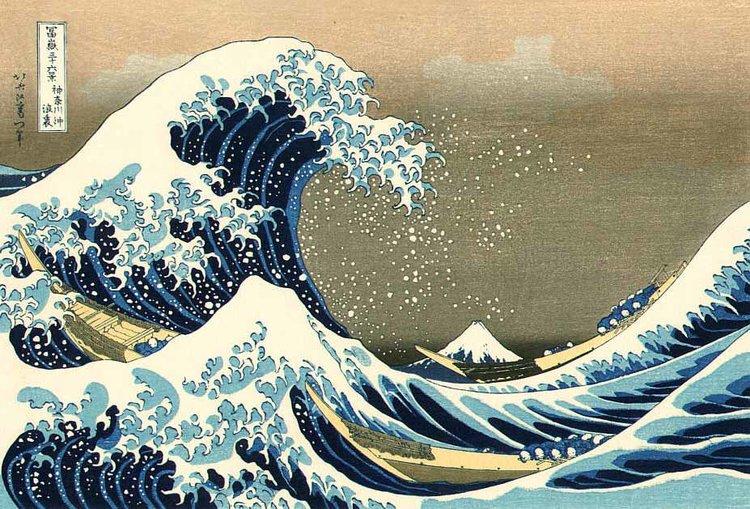
- Title: Under the Wave off Kanagawa (Kanagawa oki name ura)
- Artist: Katsushika Hokusai
- Date: 1830-32
- Culture: Japanese
- Medium: Woodblock print
- Location: Japan
This artwork was created as one of the views of Mount Fuji. This piece depicts the proximity to the sea of the Japanese people and their celebration of the island nation’s iconic mountain, Mount Fuji. The piece was part of a larger collection called Thirty-six Views of Mount Fuji (Culture Trip, 2017). This artwork depicts the frailty of human beings against nature. This piece was chosen because it represents how closely the Japanese people operate with the forces of nature.
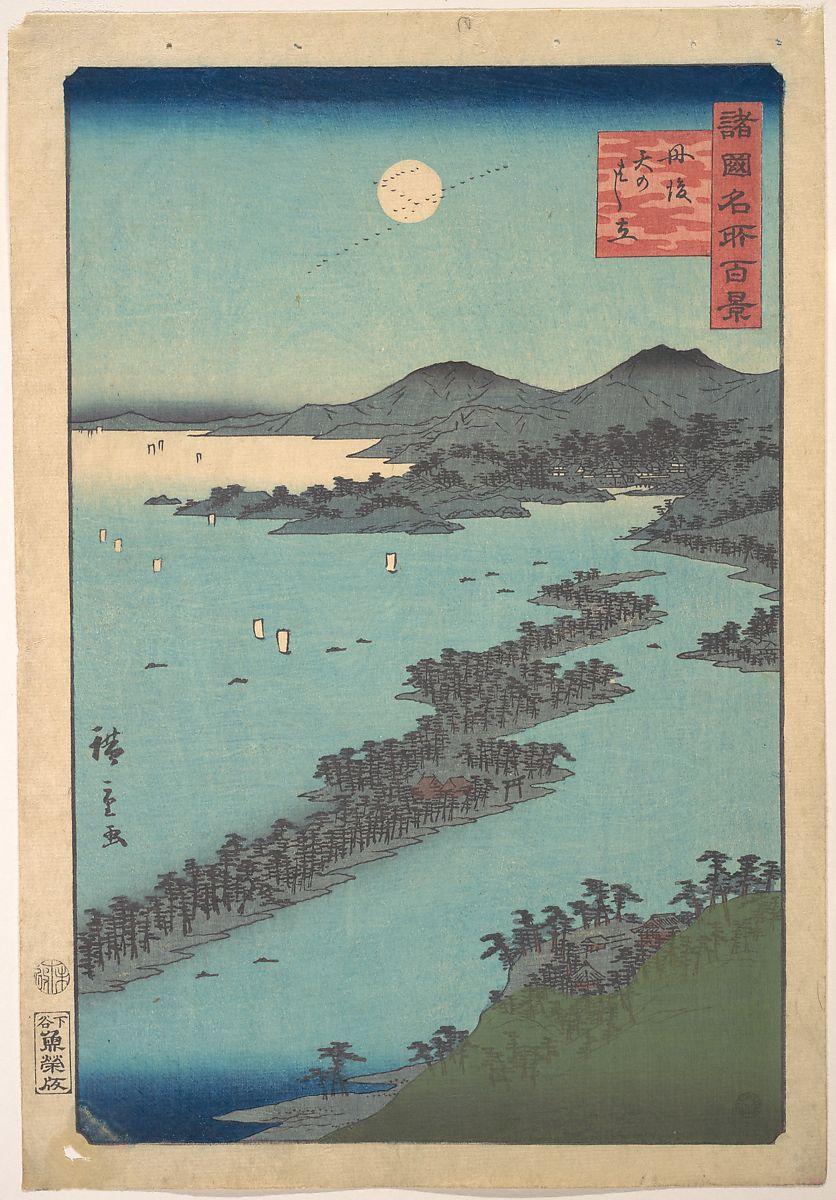
- Title: Tango Amano Hashidate
- Artist: Utagawa Hiroshige II
- Date: 1859-61
- Culture: Japanese
- Medium: Woodblock print
- Location: Japan
This piece shows a view of the Ama no Hashidate peninsula in Miyazu Bay, one of the most beloved places in Japanese culture (The Met Museum, n.d.-d). Ink painting was a popular tool of painting back then. Therefore, this painting is a depiction of the strides Japanese people had made in ink painting and manufacturing as a whole. This piece was selected because it shows how the Japanese viewed and held nature.
Chinese art
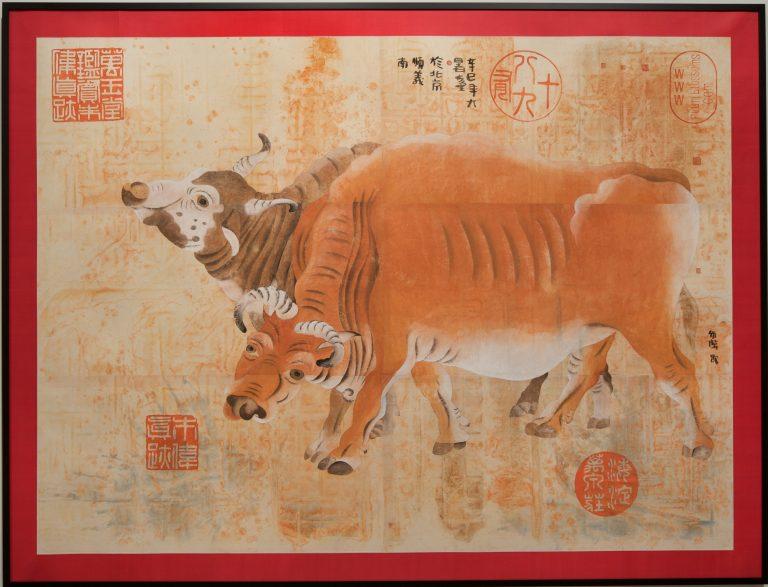
- Title: Chinese Diary, No. 52, 2001
- Artist: Zhu Wei
- Date: 2001
- Culture: Chinese
- Medium: Ink and Color on Paper
- Location: China
This piece of art was created using traditional Chinese elements. The piece features fine-brush techniques and ink from the long Chinese history (Williams College Museum of Art, n.d.). According to Zhu, he created this piece as a celebration of the thousands of years of Chinese history, using approaches and techniques from time past updated with a modern touch. This piece was selected because it is a representation of the technical development the Chinese culture achieved a long time ago and how it can still be relevant today.
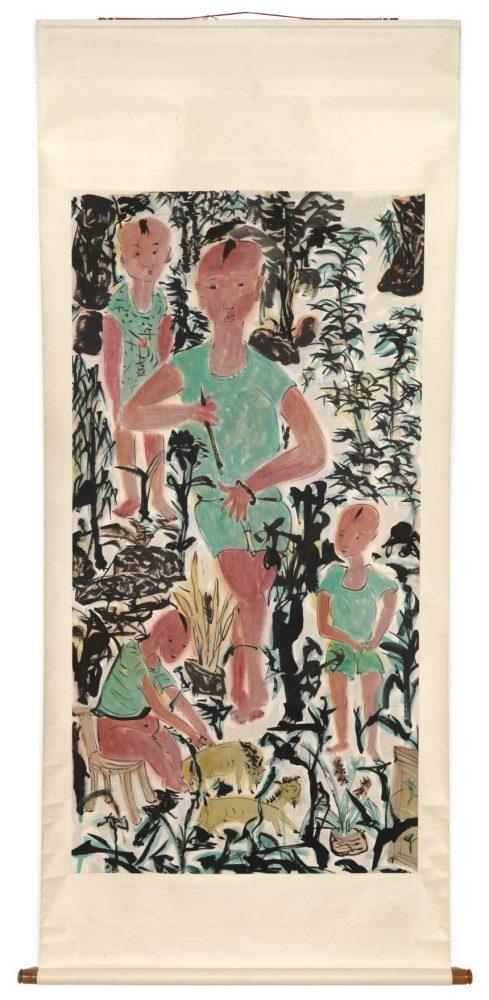
- Title: Little Yu in Bamboo Grove
- Artist: Yu Peng
- Date: 1988
- Culture: Chinese
- Medium: Ink and color on paper
- Location: China
This piece of art is disproportional, awkward and representative of the unorthodox approach some Chinese artists adopted in their works. This piece shows the complexity of the culture. The artist, Yu, cites being inspired by Zhuo, a pioneer of deliberate awkwardness in art (Williams College of Art, n.d). The piece is motivated by contemporary life, Taiwanese folk art, and Chinese ink painting. Little Yu in a Bamboo Grove was chosen because it represents the evolution of Chinese culture as it embraced influences from around the world.
Indian art
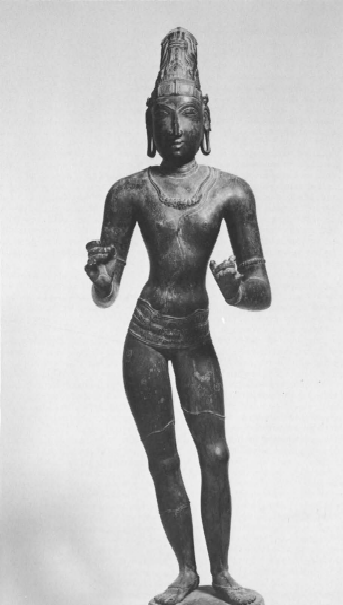
- Title: The Hindu deity Shiva
- Date: 1300 – 1500
- Culture: Indian
- Medium: Bronze
- Location: Tamil Nadu State, India
This artifact originates in medieval South India and depicts the perfection of Shiva. The statue has exaggerated shoulders and narrow waits in line with the beliefs and artistic style of the time (Google Arts & Culture, n.d.). This piece was meant to be carried around during celebrations. The statue was chosen because it shows the divinity the Indian culture attached to its gods. It also represents how technologically advanced the civilization was in terms of art and craft.
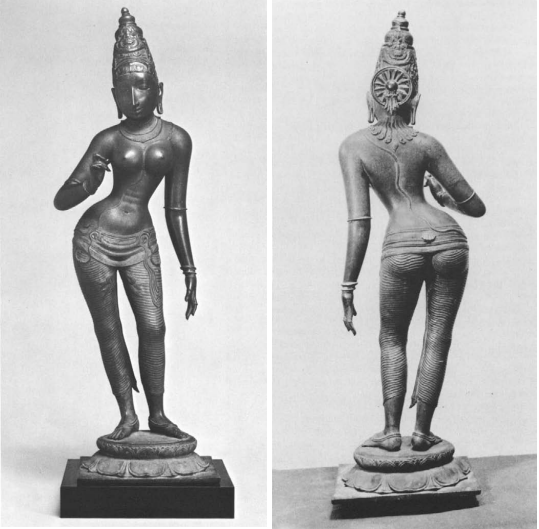
- Title: Parvati
- Date: 1450
- Culture: Indian
- Medium: Bronze
- Location: Kimberley Art Museum, Dallas
This sculpture depicts Parvati, a deity Hindu people believe is the reincarnation of Shiva’s first wife. The statue is shaped in the form of Parvati’s perfect beauty as per Hindu belief. Parvati is depicted wearing luxurious jewelry and coiffure, as she is the image of female perfection (Google Arts & Culture, n.d.). This object was chosen because it is representative of the Hindu view of and sentiment toward beauty.
Commentary/Overview
The featured pieces of art were selected from various periods in the histories of African, Indian, Chinese, Japanese, and Oceania cultures. These pieces were selected because they give a glimpse into the ways and developments of the societies in which they were found. These cultures are among the few with long histories and together,, they can be used to show the development of man from rudimentary social organizations to sophisticated cultures. The collection shows how different cultures developed at different speeds, and how each approached life. One main theme that connects all these pieces is a reverence for creation and divine beings. All cultures believed there was a power bigger than human beings and submitted to their different deities. All cultures show good workmanship with locally available resources that they used to create and manufacture objects with meaning to them.
References
Culture Trip. (2017). A brief history of “The Great Wave”: Japan’s most famous artwork. The Culture Trip.
Google Arts & Culture. (n.d.). Masterpiece: The Hindu deity Shiva.
Snyder, C. (2018). Learn more: Mende Sowei 1. Pacific Lutheran University.
The Met Museum. (n.d.-a). Ceremonial board (Malu) | Sawos people | The Metropolitan Museum of Art. The Metropolitan Museum of Art.
The Met Museum. (n.d.-b). Headdress: Male antelope (Ci Wara) | Bamana peoples | The Metropolitan Museum of Art. The Metropolitan Museum of Art.
The Met Museum. (n.d.-c). Tin Mweleun | Slit gong (Atingting kon) | Ambrym | The Metropolitan Museum of Art. The Metropolitan Museum of Art.
The Met Museum. (n.d.-d). Utagawa Hiroshige II | Tango Amano Hashidate | Japan | Edo period (1615–1868) | The Metropolitan Museum of Art. The Metropolitan Museum of Art.
Williams College Museum of Art. (n.d.). Modern & contemporary Chinese art.